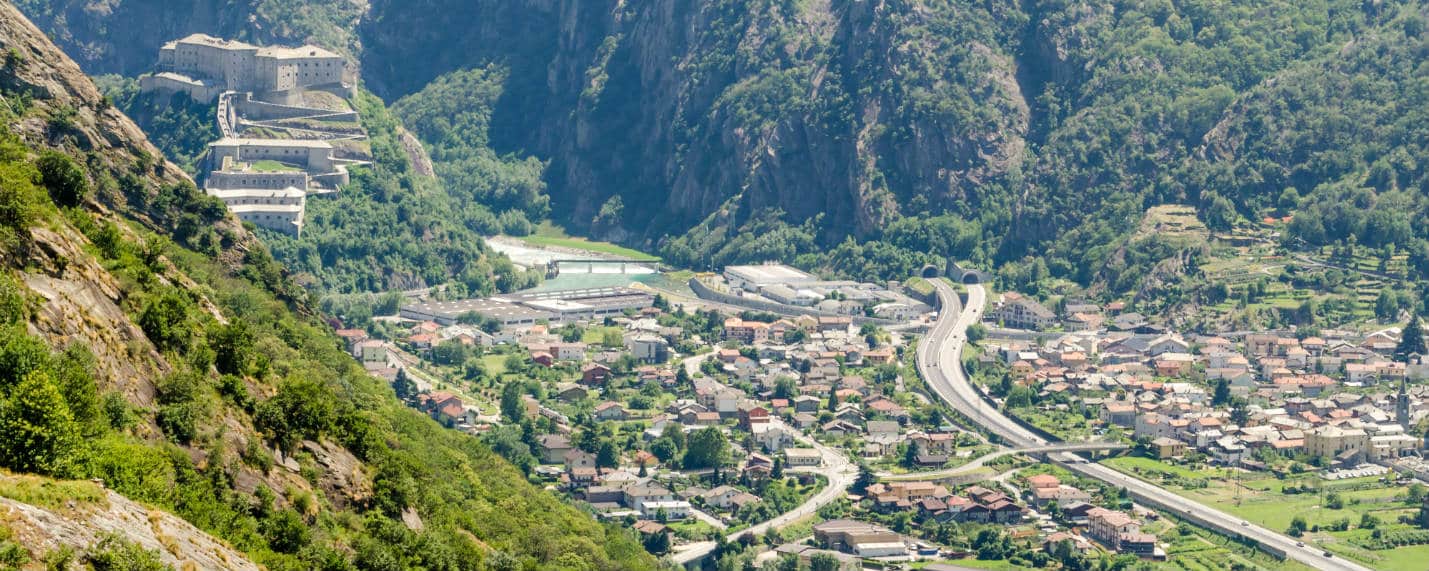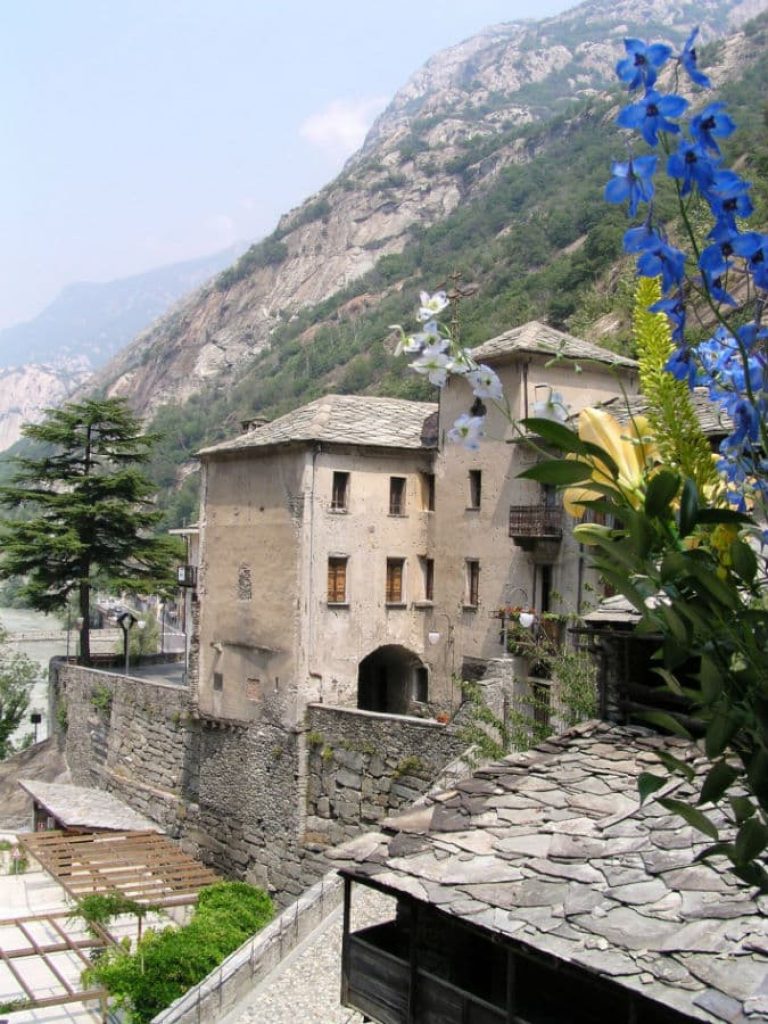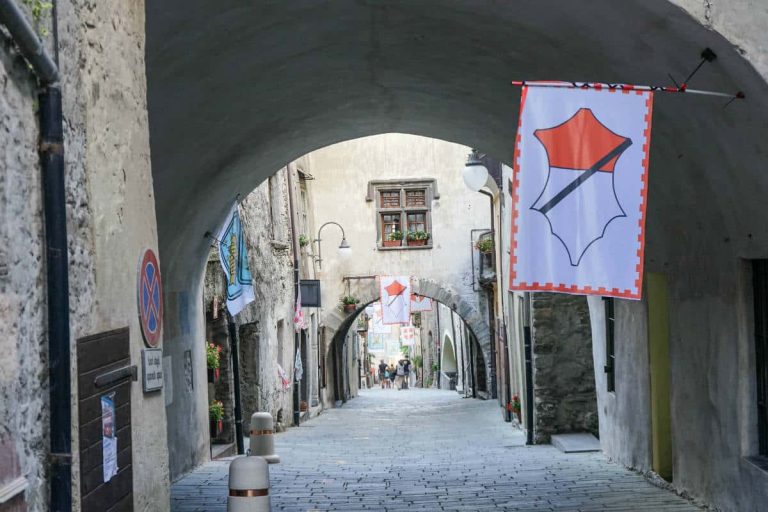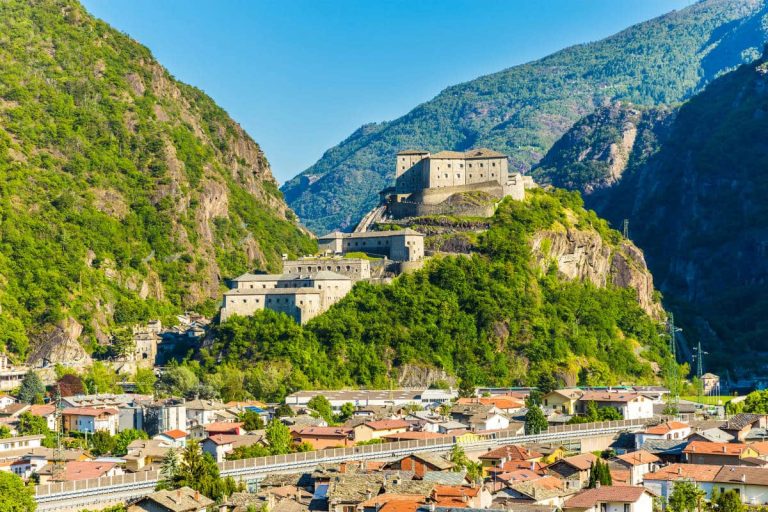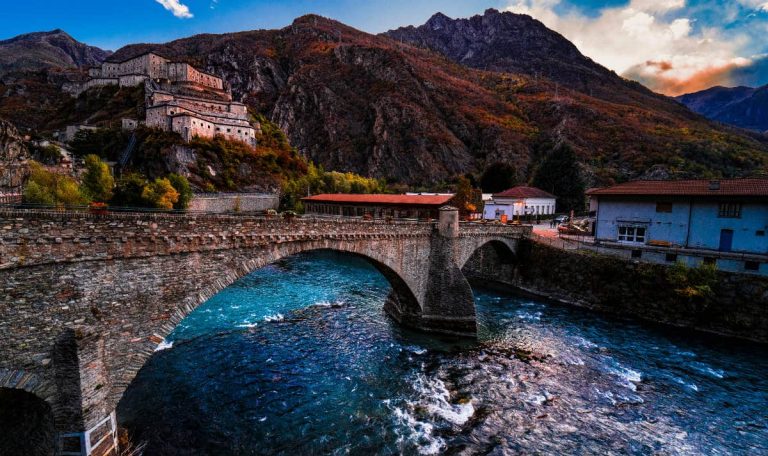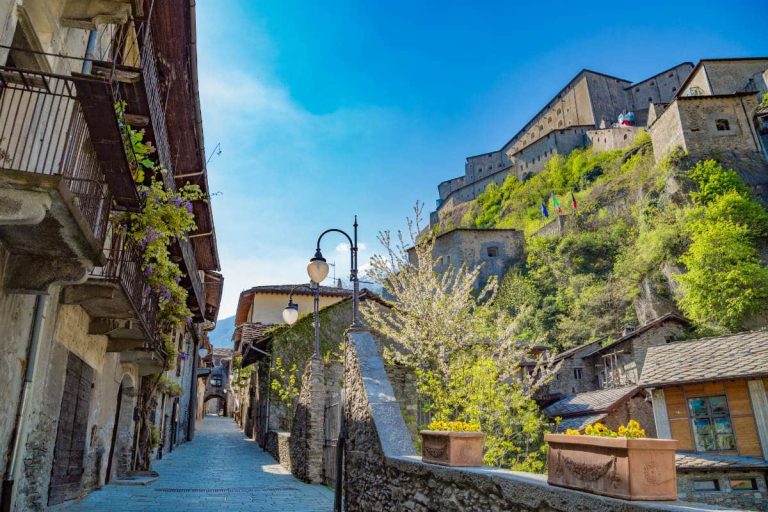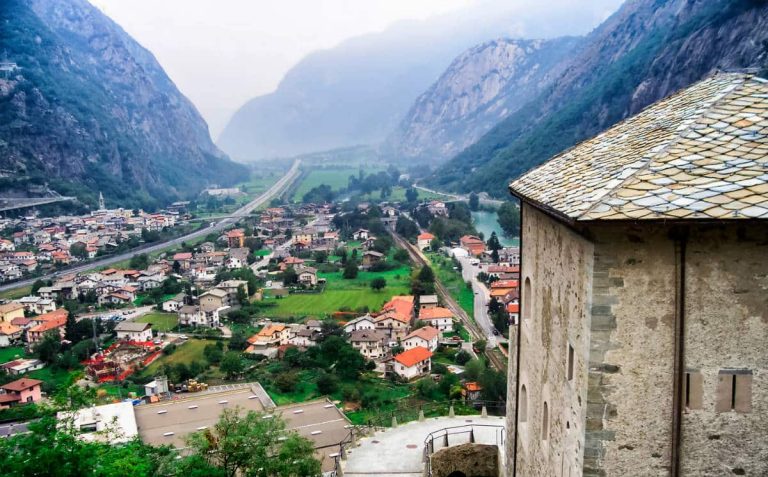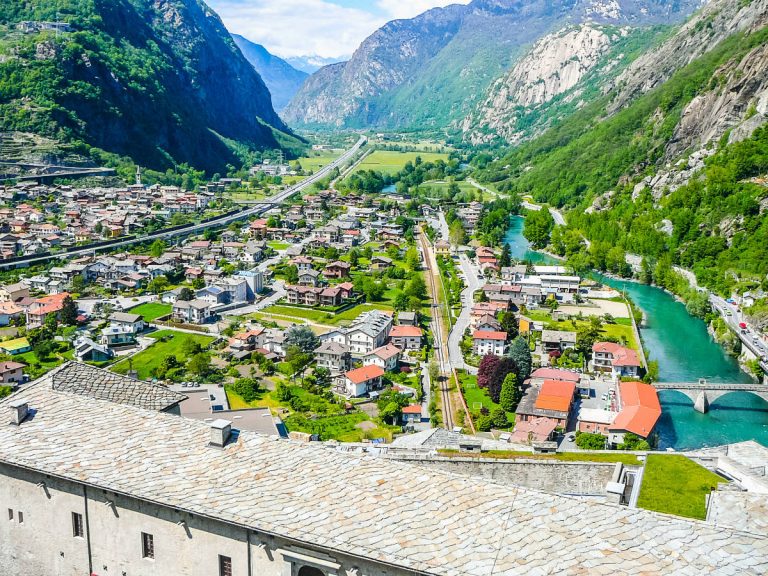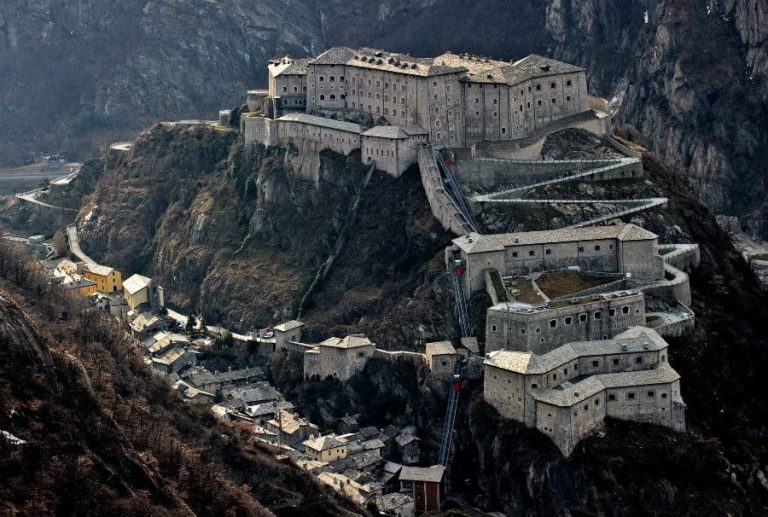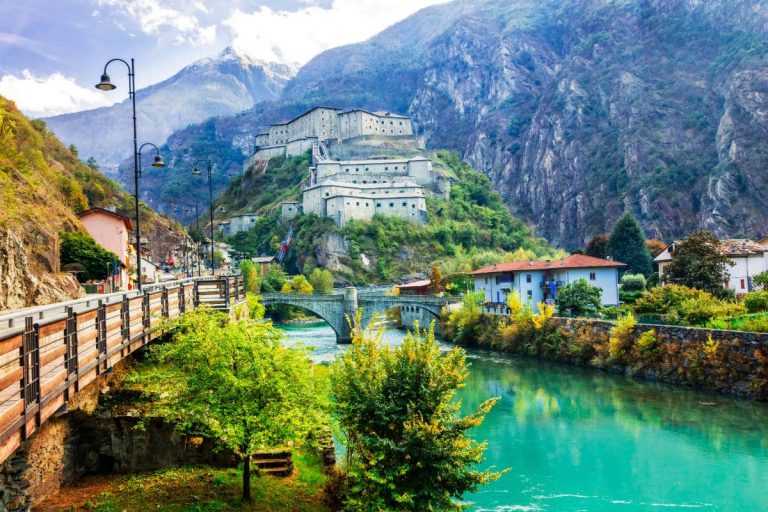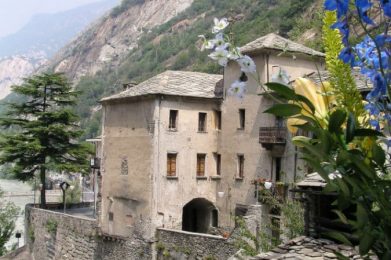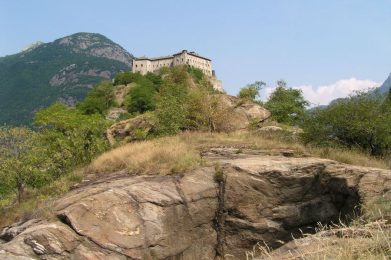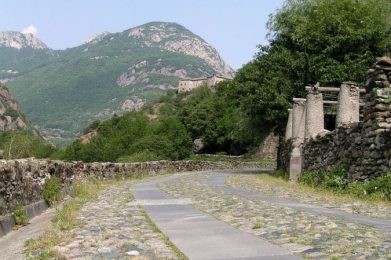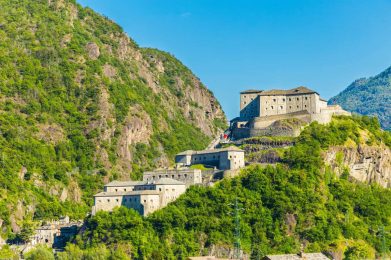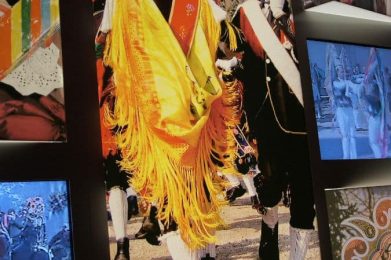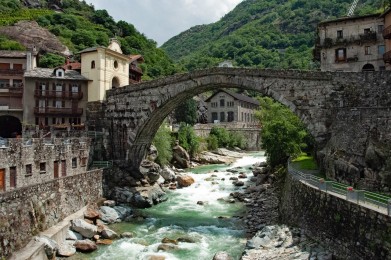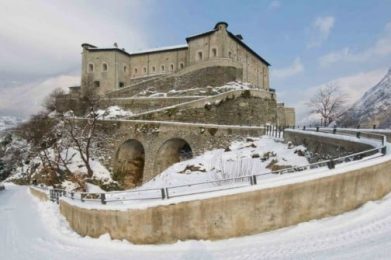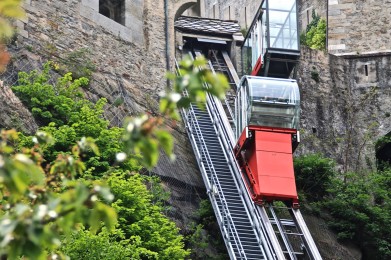Nestled between two rocky spurs that grip the Dora Baltea valley, Bard is one of the most fascinating and best-preserved villages in the Aosta Valley. Its name, of Celtic origin, recalls the word bar, "fortress" or "fortified place," a reminder of its defensive vocation since time immemorial.
A tiny Italian municipality-it has just over a hundred inhabitants-Bard was for centuries a strategic point for controlling traffic along the ancient Via delle Gallie. Even today, walking through its paved streets, marked by the furrows of Roman chariots, one breathes an atmosphere suspended in time.
The medieval village
The historic center retains its medieval layout almost intact, with a single main street running through it and housing elegant 15th- and 16th-century mansions. Notable among the monumental houses are the Bishop's House, the House of the Sundial, the Valperga House with its mullioned windows with two lights, the Challant House, the striking Ciucca House with its stone spiral staircase, and the 18th-century Nicole Palace, residence of the last counts of Bard, whose façade still retains signs of the Napoleonic siege of 1800.
Dominating the village, the imposing Fortress of Bard is the symbol of the town. Rebuilt in the 19th century after its destruction by Napoleon, it is now one of the region's main cultural hubs. It can be accessed via panoramic elevators, and its interior houses the Museum of the Alps, the multimedia path Alpi dei Ragazzi, the ancient Prigioni, and the Museum of Fortifications and Frontiers, as well as prestigious temporary exhibitions and international events.
Nature and trails
The territory around Bard holds ancient evidence: rock carvings, glacial cavities known as "giants' potholes" and the legendary "women's chute", to which popular tradition attributed virtues related to fertility. The village is also crossed by the Via Francigena, a pilgrimage route that attracts wayfarers and walkers from all over the world every year. Other paths lead to Albard di Bard and Albard di Donnas, providing spectacular views of the fort and the valley floor.
Festivals and traditions
Among the most heartfelt events is the Marché au Fort, an exhibition-market dedicated to Valdostan food and wine excellence that enlivens the village streets every October with tastings, workshops and performances. Also of great appeal is the Napoleonic historical reenactment, which recalls the French siege of 1800 with encampments, battles and thematic markets. During the holiday season, the entire central street is transformed into an atmospheric scattered nativity scene.
For the whole family
The village is also an ideal destination for families: in addition to nature walks, the fort is home to the interactive space Alpi dei Ragazzi, a play and educational trail renovated in 2023 that engages young people and adults in activities on the themes of mountains and climate change.
Bard is a jewel of stone and history, guardian of legends, traditions and alpine landscapes, combining the medieval atmosphere of the village with the cultural vibrancy of a fort reborn as an international reference center.

